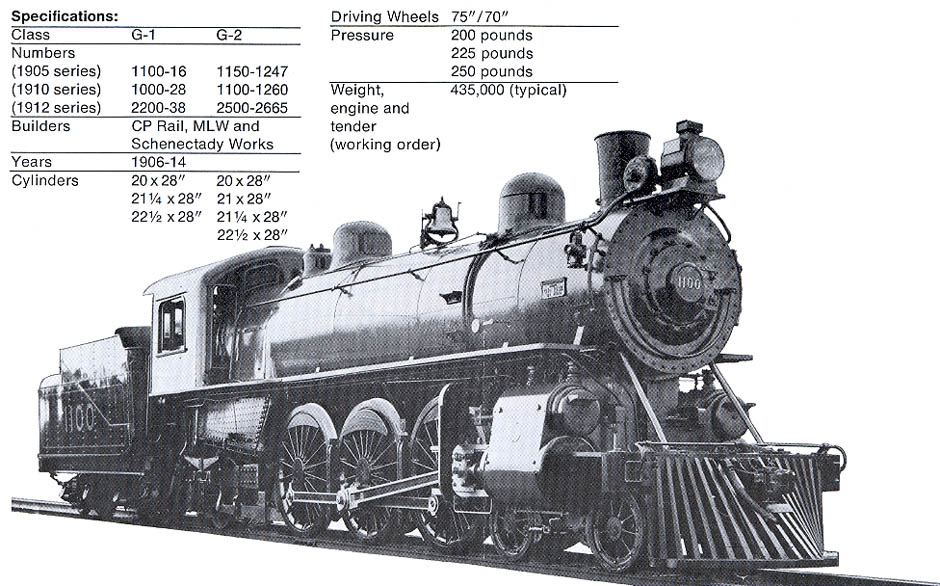by Omer Lavallee
The first 4-6-2 type locomotives in the world were produced shortly after the
turn of the century for use in New Zealand; from this first application came the type name
"Pacific". Full use was made of the additional length afforded by the trailing
truck, over which a wider firebox was placed. The resulting increased boiler capacity made
the type instantly popular. Within a decade, all of the major North American railways had
fleets of these locomotives.
Canadian Pacific was no exception; 498
|
4-6-2s were comprised in the
five CP Rail classes represented by the letter G. The G1s, G2s and G5s, by virtue of size
and service, were light Pacifics. The G3s and G4s, on the other hand, were larger engines
for heavier duties. The first two series of Pacifics, the G1 and G2 classes were outshopped
by various builders between 1906 and 1914, and differed from one another in only one major
particular, the size of the driving wheels. While the more functional G2s were given 70 inch
driving wheels, the less numerous but faster G1s had 75 inch wheels, giving them somewhat
less tractive effort. Our illustration
|
of the first G1, No. 1100 (later No.
2200), shows the clean lines typical of the designs of H.H. Vaughan, then in charge of CP
Rail motive power.
Practically all of the G1s and G2s survived more than half a century in service. That the
light Pacifics were in many ways one of CP Rail's ideal types was underlined in 1944 when
the first G5 4-6-2s appeared. Emulating the earlier engines in size, weight
and capacity, 102 G5s were produced between 1944 and 1948 bringing the total number of
light 4-6-2s on Company lines up to 307.
|

